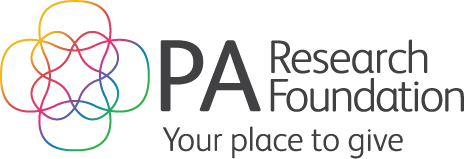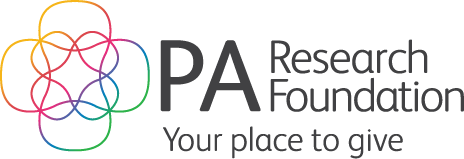
Photo courtesy of PAH Communications.
Friends of the Foundation
Dr Stefan Blum – Advancing Neuroimmunology for
Better Patient Outcomes
In this “Friends of the Foundation” feature, we shine a light on the work of Dr Stefan Blum, a Staff Specialist in Neurology at the Princess Alexandra Hospital (PAH), whose research is focused on the intersection between the immune system and neurological diseases.
Through his dedication to understanding conditions such as multiple sclerosis, myasthenia, and autoimmune encephalitis, Stefan is helping to drive real improvements in diagnosis, treatment, and patient care. With vital support from the PA Research Foundation, his work is bringing new hope to patients affected by these often misunderstood and life-altering diseases.
In this Q&A, Stefan shares what drives his research, the impact of Foundation support, and what excites him most about the future of neuroimmunology.
What is your area of research?
My broad area of research is the connection between the immune system and neurological diseases, called Neuroimmunology. There are a lot of diseases encompassed in this area, such as multiple sclerosis, myasthenia, and autoimmune encephalitis. These conditions are uncommon and often not well known, but they have a big impact on affected individuals.
What originally drew you to this area of research?
I did a PhD in immunology while studying in Germany. Even as a medical student, I was interested in the interplay between the immune system and brain health. I subsequently pursued a career in neurology but have maintained my interest in the interface of immunology and neurology.
What impact do you hope your research will have on patient care or public health in the near and long term?
These conditions are usually chronic and disabling, often affecting young, otherwise healthy people in the prime of their lives. Some conditions are well treatable, others less so with currently available medications. I hope that my work will help to improve the medical care of these patients.
How has funding from the Foundation helped accelerate your research or opened up new possibilities?
The funding has particularly assisted in research into a group of disorders called autoimmune encephalitis. This condition affects people of all ages and frequently presents with psychiatric features such as psychosis and epilepsy. We’ve been working with a number of collaborators on improving diagnosis of these conditions using imaging techniques and serum markers.
What challenges or obstacles do you frequently face in your research, and how do you overcome them?
Medical research is often a very complex undertaking. In my field, collaboration between multiple parties and institutions is essential, which can create personality and bureaucratic hurdles. Also, research can be frustrating at times. Good ideas can come to nothing after a lot of work, whereas at other times, things just come together with a great result!
What’s the most rewarding part of your work, and what are you most proud of in your journey so far?
It’s been incredibly rewarding to supervise PhD students and see their research contribute meaningfully to the field. Two of my former PhD students have gone on to very successful careers after doing great work in the field of autoimmune encephalitis. I’m also involved in a number of ongoing PhD projects that are progressing well.
Looking ahead, what future directions or innovations excite you the most in your area of research?
Our team is involved in ongoing research and clinical trials. Some of these trials are now resulting in new therapies becoming available in Australia. There are also a number of other new classes of medications becoming available in neuroimmunology. As such, it’s an exciting time in our field, and I’m eager to see the impact these treatments will have on patients.
How important are organisations like the PA Foundation in terms of funding research and keeping it progressing?
PARF has been incredibly important for us in running clinical trials at PAH. They’ve been great at responding to external opportunities that arise — particularly when it comes to collaborations and funding.
The Foundation can’t do its work without its donors and supporters – what would you say to them?
Thank you! A lot of research would simply not happen without you.




